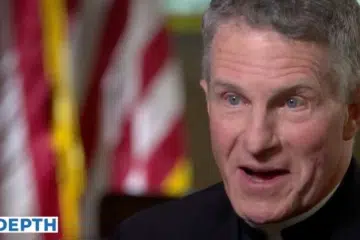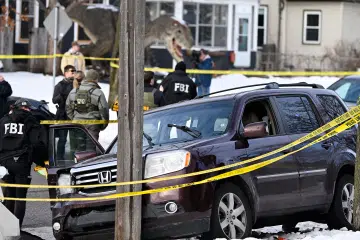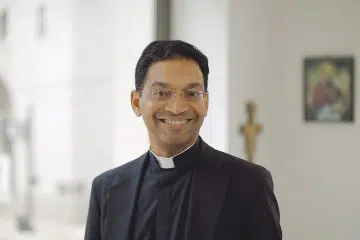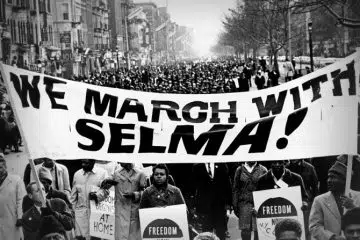Ohio group works to stop executions
By Eileen Connelly, OSU
The Catholic Telegraph
Joe D’Ambrosio spent more than 20 years on Ohio’s death row protesting his innocence in the 1988 murder of 19-year-old Anthony Klann of Cleveland. In early 2012 D’Ambrosio became the sixth death row inmate to be exonerated in Ohio and the 140th overall in the nation since the death penalty was reinstated in 1976.
A lifelong Catholic, D’Ambrosio relied heavily on his faith during the years he was incarcerated. “It’s on God’s time. It’s not our time,” he said during a presentation at St. Monica-St. George Parish Newman Center in Cincinnati in April of last year. “We want it right now, but it’s on God’s time that He will do what He wants.”
D’Ambrosia’s wrongful conviction is just one example of why the non-profit Ohioans to Stop Executions (OTSE), based in Columbus, remains dedicated to ending the use of the death penalty in Ohio. Founded in 1988, OTSE is comprised of faith and community leaders, activists, attorneys, death row exonerees and those who have lost loved ones to violence. In its early years, OTSE worked to raise awareness and education around state executions as Ohio began executing again in 1999.
Since then, OTSE has worked on various campaigns for a moratorium on executions and a death penalty study.
“The United States has the best legal system in the world, but there are still tragic mistakes being made from start to finish, said Kevin Werner, executive director of OTSE since 2007.
He noted the recent case of Billy Slagle, condemned to death for the fatal stabbing of his neighbor during a burglary. Slagle was found hanged in his prison cell in early August. In an apparent suicide, he took his own life just days before his scheduled execution.” He never should have been on death row,” Werner explained, noting that prosecutors offered a plea deal to Slagle at the time of his trial, but his own lawyers never disclosed the deal to him. “Billy never knew that his lawyers were going back into court to with an agreement on the plea deal. To have his case end like this is the most tragic ending possible.”
A graduate of Wheeling Jesuit University in West Virginia, Werner said he learned there what it means “to be a person for others.” While serving in the Jesuit Volunteer Corps after college, he met Marietta Jaeger-Lane, whose young daughter, Susie, was kidnapped during a family camping trip and murdered in 1973. Putting compassion and forgiveness before vengeance, she asked prosecutors for the alternative sentence of mandatory life without parole rather than death for her child’s killer, and even reached out to his family, forming an unlikely friendship.
“At the time,” Werner admits, “I didn’t understand how someone could be so capable of forgiveness and a bond of solidarity, but I realized if I ever had the opportunity to work against the death penalty, I would.”
The death penalty is an important respect life issue, Werner stressed. “No matter what a person has done, they are still a child of God, part of the human family,” he said. “Judging people on the worse choice they have ever made defies the logic behind why we want to rehabilitate people. There’s no doubt that there are dangerous people, but the vast majority aren’t on death row. If we want a system that values all life, the death penalty is out of line with that thinking. We need to be doing more with restorative justice and more with the murder victims’ families out of respect for those who are left. There are multiple families dealing with grief, going through trauma. Respect for the life of all people should be central to our criminal justice system, because at the end of the day, we’re all made in God’s image and likeness and our policies should respect that.”
Werner said it has been encouraging from the national perspective to see what efforts are being made to end the death penalty and make reforms. Six states have repealed the death penalty in the past six years, he noted, and criminal justice reforms are happening around the country. “People are realizing that the death penalty is not what it was perceived to be back in the early 70s,” Werner said. “What we’re going to see is litigation in the federal courts that is emblematic of the growing mistrust of a system that does make mistakes. We think that over the next few years, we will continue to see states repealing, and the Catholic bishops and leaders of other faith traditions will be a huge boost to those efforts.”
“I can’t say enough how grateful we are to have such strong support from the Archdiocese of Cincinnati for our efforts, and from individual Catholics in whom we seen a change in heart and mind about the death penalty,” he added.
While his work is challenging, and often heartbreaking, Werner said, it is “the idea that we can have a better system and that there is a better way to deal with the problem that keeps me going. It’s been very powerful to get to know some of the men who have been exonerated. The mistakes that were made in their cases are unconscionable. No matter what a person’s position is on the death penalty, someone shouldn’t be executed for a crime he didn’t commit. That’s what keeps me focused on this issue.”
OTSE will be marking its 25th anniversary at its 2013 conference, titled “Faith, Hope and Healing,” in early October. This includes an evening with death row exoneree Joe D’Ambrosio on Oct. 4, and a screening of some of the films from the “One for Ten” documentaries, a series focusing on innocence and death row. On Oct. 5, the agenda features a panel discussion on the needs of murder victims’ families and the stories of two women from Ohio who lost their loved ones to murder and their journey toward healing. On Nov. 2, a special anniversary tribute is planned. For more information about these events and OTSE’s ongoing efforts, visit http://www.otse.org.
This article originally appeared in the October 2013 edition of The Catholic Telegraph.













